Can the Most Athletic Prospects in the 2022 NFL Draft... Actually Play Football?
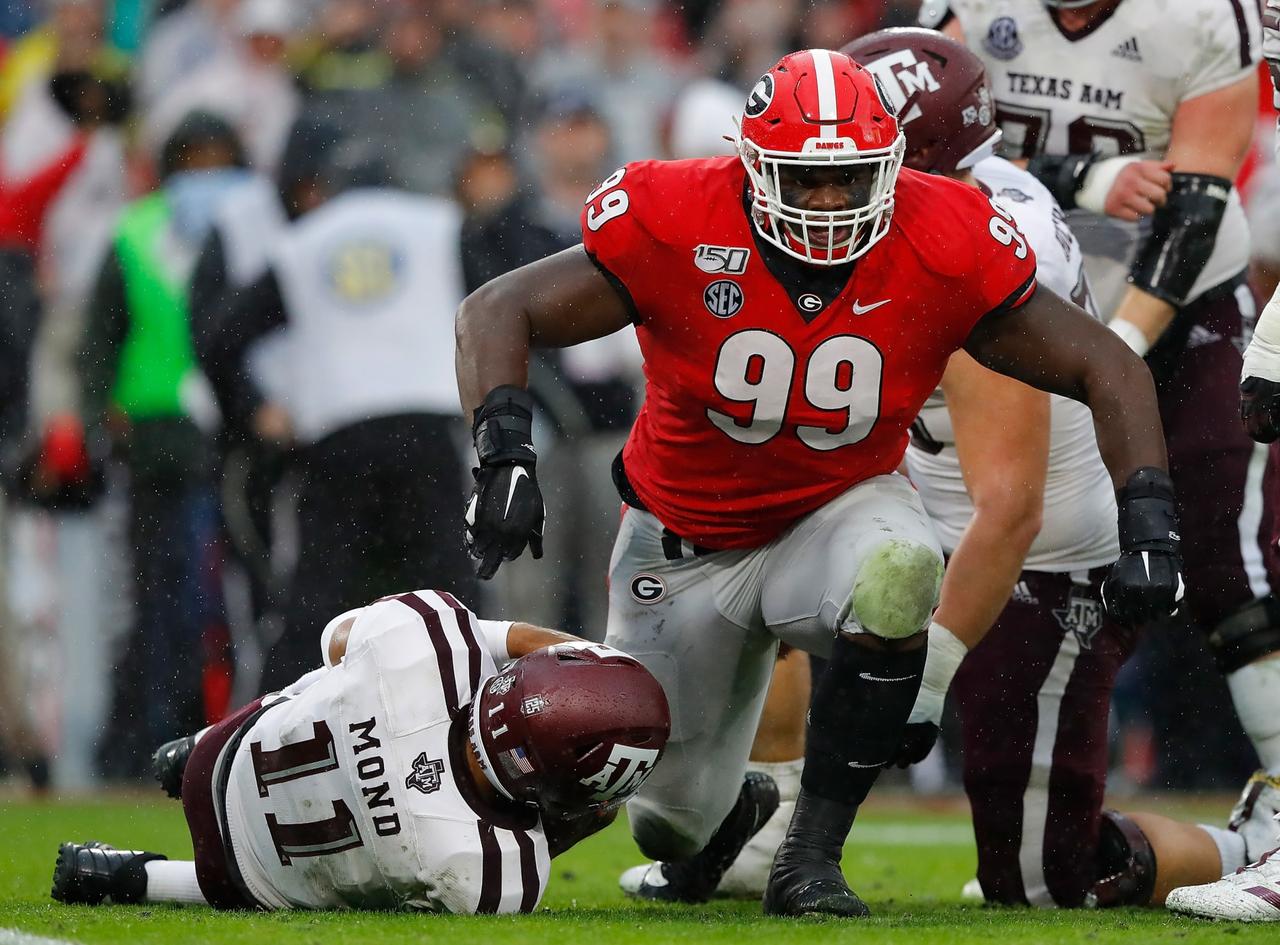
The 2022 NFL Draft offers something no previous iteration has: Four prospects with the greatest athletic composite scores we have ever seen at their respective positions. Four “Perfect 10s.” In simple terms, these players will immediately be the best athletes at their position in NFL history according to draft process testing.
And this is where you ask… “but can he play football?” Thank you for the column idea! But before we dive in, consider spending a few minutes learning about the importance of athletic testing in evaluations before totally writing it off. The benefits are obvious if used appropriately.
Composite scores incorporate each athletic test while factoring in weight.
iDL Jordan Davis, Georgia (6’6/341 lbs)
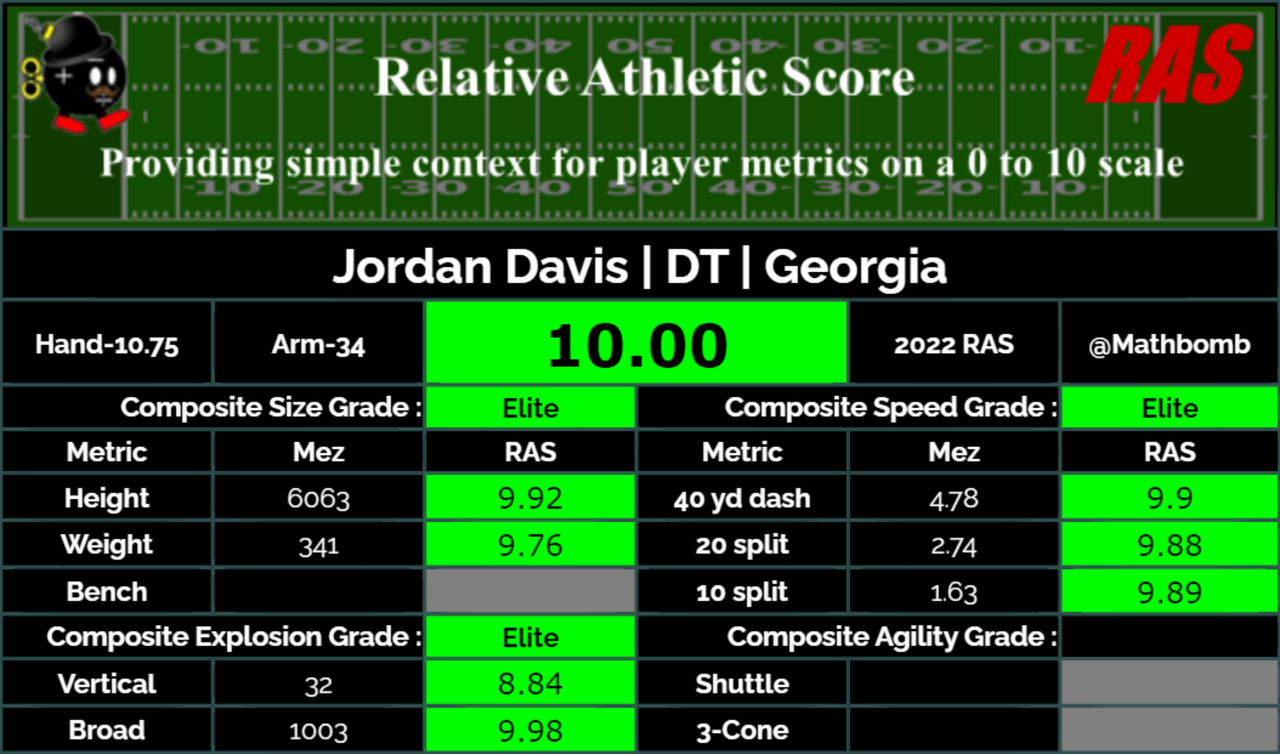
It would be easy to assume Jordan Davis is a mammoth Nose Tackle who plugs gaps and occupies bodies in the vein of Casey Hampton. His actual game shows so much more (as does the fact he played far more snaps shading the Guard instead of on top of the Center). I started in 2020 versus Michigan. Early on he was washed by tackle blocking down. Next series, he plays frontside 3-tech, works around his blocker, shocking movement for a man of his size and beats the RB to the edge for a two yard loss. Resetting momentum and anchoring against him looks so difficult.
The OL tasked with blocking Davis appear like they are bracing for a truck to hit them - and as soon as they prepare to absorb that force, you see other instances where they are shocked he gets to their edge so quickly. If Davis gets you off balance, there is a chance he folds you like a table. Players legit have trouble reaching him.
He simply moves differently than previous prospects of his size and is totally destructive when allowed to pin his ears back and disrupt. Yet somehow Jordan Davis has become the most polarizing prospect in the 2022 NFL Draft. The great Ben Fennell and I completed a full 20-minute deep dive on Davis fit in the current NFL landscape.
The only way to acquire a player like this is to draft him. This package has truly never entered the league.
Can He Play? Yes. 100%.
TE Jelani Woods, Virginia (6’7/253 lbs)
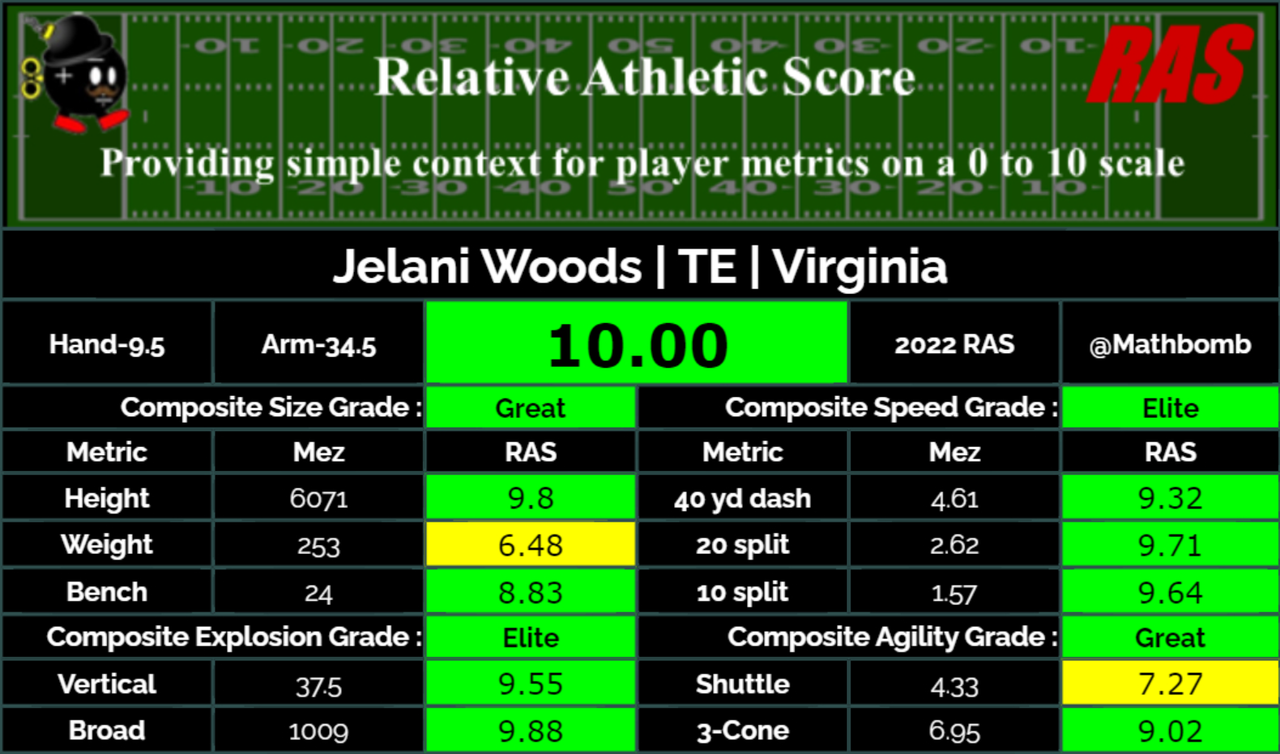
The buzz is built on highlights. The barreling over multiple Pittsburgh defenders. Seam shot against Illinois and bouncing off defensive backs. Slant versus Wake Forest where he runs over the Wake Forest safety. Woods is a massive human rumbling when trying to get vertical. Size is a skill in this case as defenders do have a tough time wrapping up on him.
The question I come back to is if Woods can create space on his own, or will it need to be created for him via spacing, delayed routes or alignments. There is no suddenness. Runs a whip route and the grass turns into quicksand. When the defense is instructed to be physical with him near the line of scrimmage, Woods struggles to work around that wall, choosing to go through it instead) and that pacing slows the entire progression down.
Maybe a Mike Gesicki linear style could be in Jelani Woods’ future? I would never call Gesicki agile or sudden, but he looks like Hunter Renfrow compared to Woods. Or is a Donald Parham redzone, seam or sideline role a possibility for the soon-to-be Cavalier?
But Can He Play? I’m Dubious. The reason Jelani Woods did not receiver more opportunities is because he did not create them. A 10% drop rate does not help. There is not a comparable player with this style that sustained success. It would be different if his size was an asset in the running game.
CB Zyon McCollum, Sam Houston (6’2/199 lbs)
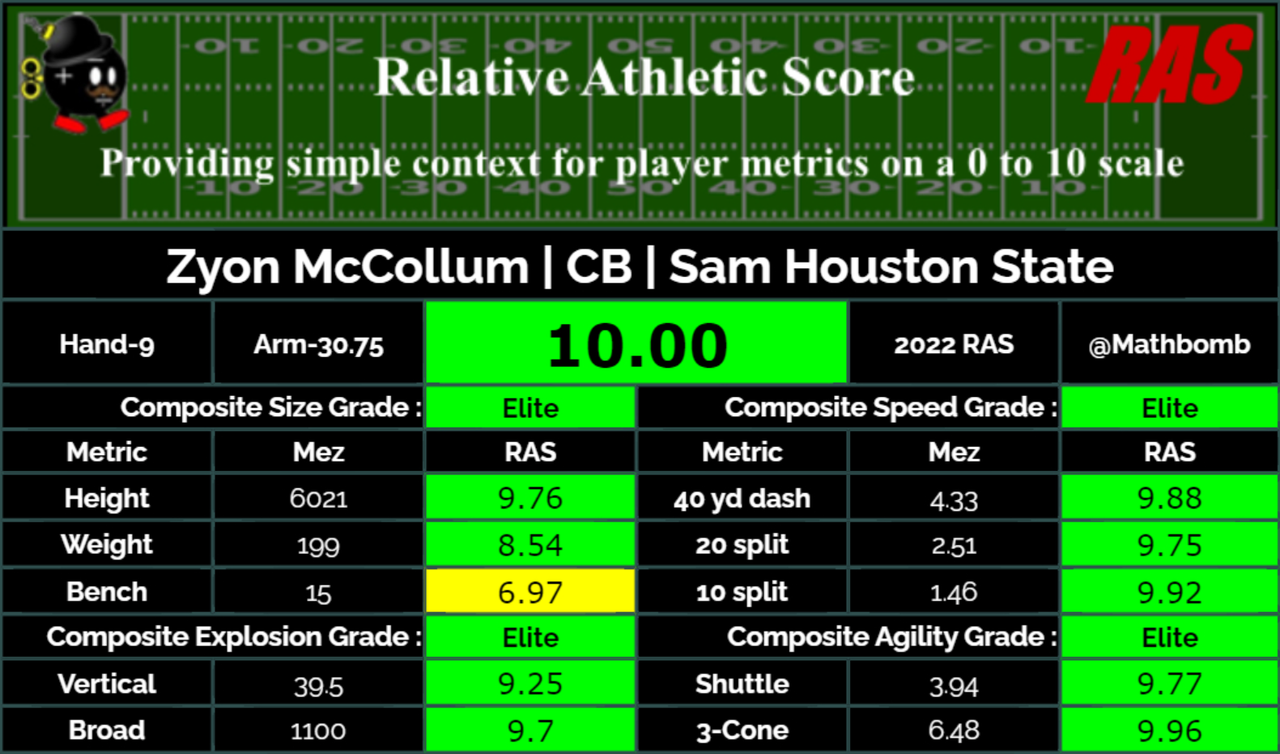
A true press corner. The positive plays are tantalizing. Vertical routes, McCollum attaches his outside arm in phase and when he sees the WR’s eyes find the football, head turns, shields, boxes out and makes a play on the ball. Watches hips. Sam Houston State would let him play iso 1 on 1, a full third of the field. That is a lot of trust. And McCollum has fire - will work off man downfield and drive on ball carrier underneath.
Now, there are times when McCollum is super light in his contact on press - basically like a jab then bail. He can lose the ball downfield, get tied up in his footwork and miss on catch timing.
But Can He Play? The flashes, with such a massive responsibility, indicate yes. And the coaching at the NFL level should help clean up technique failings.
LB Troy Andersen, Montana State (6’4/243 lbs)
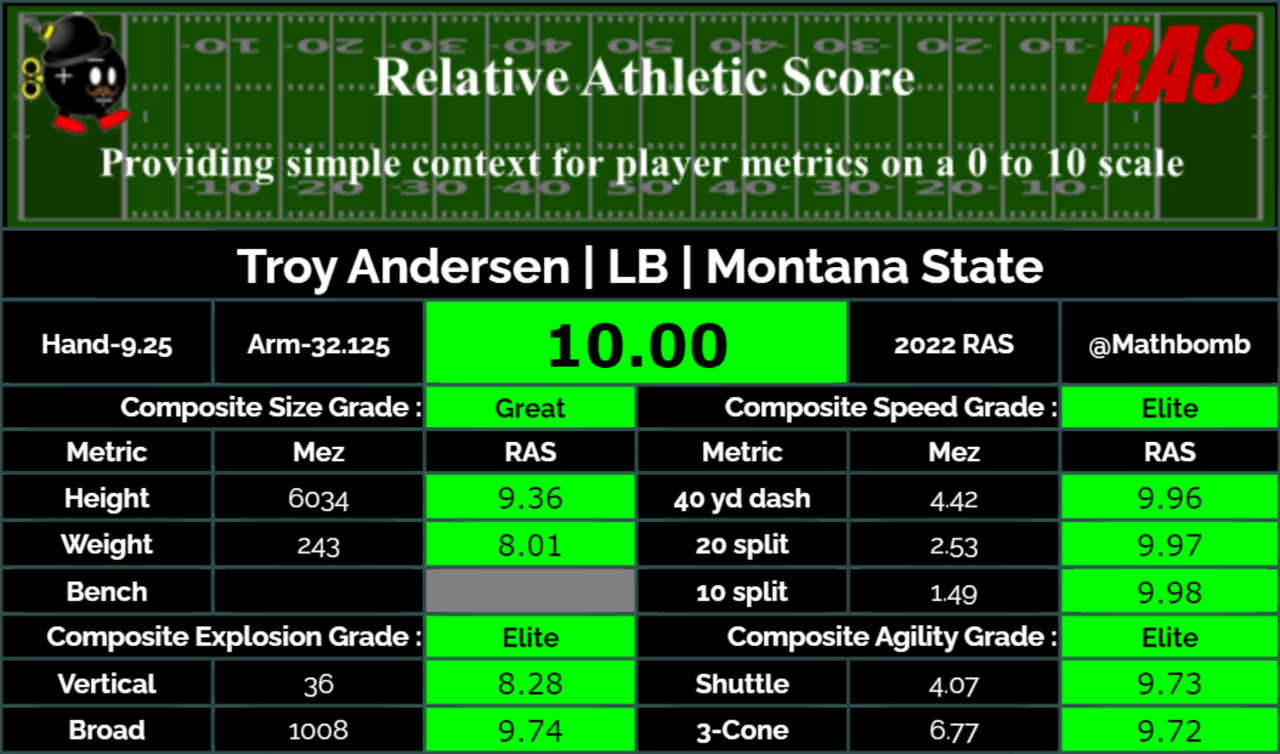
Just a crazy college career. Started at both running back and linebacker as a freshman. Then started at quarterback in his second season, followed by a full-time switch to linebacker in 2019 and 2021. Over 1,800 rushing yards and 33 touchdowns, coupled with 11.5 sacks and three interceptions. You have to love it.
Let’s start with the good: Andersen’s best plays are beating the offense to the corner, absorbing blocks and keeping the outside shoulder free. When he can plant and drive - see ball, get ball - that’s his best work. Blitzing and closing speed catches EVERYONE off guard.
The stuff up the middle is where it gets a bit tricky. The traditional thumping linebacker stuff does not come naturally. Andersen will take false steps or not drive to fill lanes. Gets stuck in no man's land between coverage and the line of scrimmage, specifically North Dakota State put him in a bind with the spacing of their receivers pre-snap and in routes post-snap.
It is really fun to see him chase edge playmakers from behind. The big man moves fast! Lacks anticipation other linebackers show, but could he develop similar to Logan Wilson with the Bengals?
But Can He Play? Maybe! Playing on the edge or a drop end similar to Uchenna Nwosu would help him get on the field, along with special teams. But development in the simple stuff - right place, right time, less wasted movement - is critical.